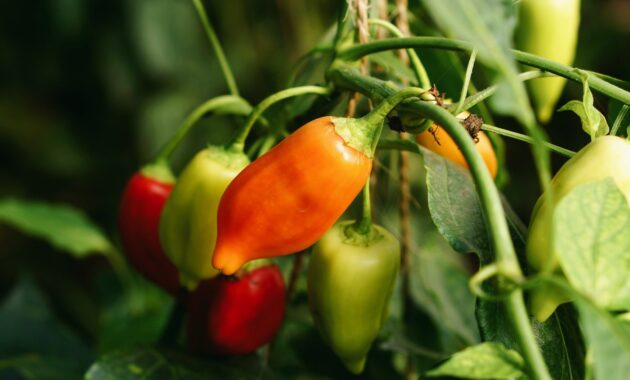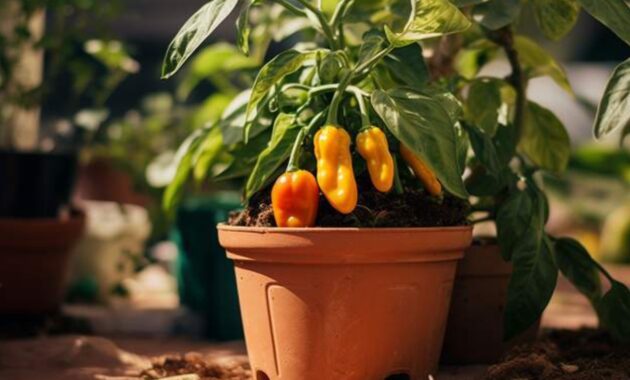
The poblano pepper is a beloved variety in Mexican cuisine, known for its mild heat and deep, earthy flavor. Its versatility makes it perfect for a range of dishes, from stuffing to sauces. Whether you enjoy it fresh, roasted, or dried, the poblano adds a unique taste to any recipe.
Key Characteristics of Poblano
| Feature | Description |
|---|---|
| Scientific Name | Capsicum annuum var. poblano |
| Common Names | Poblano, Ancho (when dried) |
| Origin | Mexico |
| Heat Level | 1,000–2,000 Scoville Heat Units (SHU) |
| Size | 4–6 inches long, 2–3 inches wide |
| Color | Dark green when fresh, turns red as it ripens |
| Plant Type | Annual in temperate climates, perennial in tropical climates |
Flavor and Heat Profile
Poblanos are known for their mild heat, making them perfect for people who enjoy a bit of warmth without the intense spiciness of hotter chili peppers. The flavor of the poblano is earthy, slightly smoky, and rich, with a subtle sweetness, especially when roasted.
- Scoville Heat Units (SHU): 1,000–2,000, which is relatively mild compared to jalapeños or habaneros.
- Ancho Chili: When dried, poblanos are called ancho chilies, which have a sweet, raisin-like flavor with a smoky undertone.
Growing Poblano Peppers: A Step-by-Step Guide
1. Location and Climate
Poblanos prefer warm, sunny locations with well-drained soil. They thrive in climates with temperatures between 70°F and 85°F (21°C to 29°C) and require at least 6 hours of sunlight each day.
- Ideal Growing Zones: USDA zones 9-11 for outdoor growth; in cooler regions, they can be grown in containers and moved indoors during colder months.
2. Soil Requirements
Poblanos need rich, fertile soil that drains well. The soil pH should be slightly acidic, ideally between 6.0 and 6.8. Add organic matter or compost to improve soil quality.
- Fertilizing: A balanced fertilizer (like 10-10-10) should be applied at the time of planting, followed by additional feeding when the plants start to flower.
3. Planting Poblano Seeds
- Starting Indoors: Sow poblano seeds indoors about 8-10 weeks before the last frost. Plant the seeds 1/4 inch deep in seed-starting mix.
- Transplanting: Once the risk of frost has passed and the seedlings are about 4-6 inches tall, transplant them into the garden, spacing the plants 18-24 inches apart.
4. Watering and Maintenance
- Watering: Poblano plants need consistent watering, especially during dry periods. Keep the soil evenly moist, but not waterlogged.
- Mulching: Add mulch around the plants to retain moisture and regulate soil temperature.
5. Pests and Diseases
- Aphids, Whiteflies, and Spider Mites: These pests can be a problem but can be controlled with neem oil or insecticidal soap.
- Blossom End Rot: This common issue is caused by calcium deficiency or inconsistent watering. Ensure the soil is well-balanced in nutrients and water regularly.
Harvesting Poblanos
Poblano peppers can be harvested when they are dark green and about 4-6 inches long. If left on the plant, they will turn red, developing a slightly sweeter flavor.
- How to Harvest: Use scissors or garden shears to cut the pepper from the plant, leaving a small portion of the stem attached.
- Drying for Ancho Chili: To make ancho chili, leave the poblano to ripen to full red, then dry it in the sun or a low-temperature oven.
Culinary Uses of Poblano Peppers
Poblanos are incredibly versatile and are used in many traditional Mexican dishes. They can be used fresh, roasted, stuffed, or dried.
1. Stuffed Poblanos (Chiles Rellenos)
One of the most popular uses for poblanos is in chiles rellenos, where they are stuffed with cheese, meat, or rice, then battered and fried or baked.
2. Roasted Poblanos
Roasting poblanos brings out their smoky, earthy flavor. They are commonly used in:
- Soups and Stews: Roasted poblanos add a rich, smoky flavor to soups like poblano corn chowder or stews.
- Salsas and Sauces: The roasted peppers can be blended into salsas or sauces, like creamy poblano sauce.
3. Ancho Chili
Once dried, poblano peppers become ancho chilies, a staple in Mexican mole sauces, marinades, and chili powders.
- Mole: Anchos are a key ingredient in traditional mole, a complex sauce made with chocolate, spices, and peppers.
- Spice Rubs: Ground ancho powder is commonly used in spice rubs for meats, adding a smoky, sweet flavor.

Health Benefits of Poblano Peppers
Poblano peppers are not only delicious but also packed with essential vitamins and nutrients:
- Rich in Vitamins: Poblanos are high in vitamin C, which supports immune health, and vitamin A, which is essential for eye health.
- Antioxidants: Poblanos are loaded with antioxidants like beta-carotene, which help reduce inflammation and protect the body from free radicals.
- Low in Calories: Poblanos are a low-calorie, nutrient-dense food that fits well into a healthy diet.
Fun Facts About Poblanos
- Name Origin: The poblano pepper is named after the city of Puebla in Mexico, where it is widely grown and used in local cuisine.
- Heat Level Variation: While poblano peppers are typically mild, their heat level can vary slightly from pepper to pepper, with some occasionally being hotter.
- Versatile Color: When green, poblano peppers are typically used fresh or roasted. When ripened and dried, they become ancho chilies, a completely different ingredient with a more complex flavor.
Conclusion: Why Grow Poblano Peppers?
Poblano peppers are easy to grow and provide a rich, earthy flavor to countless dishes. Their mild heat makes them approachable for those who want to enjoy a pepper’s flavor without overwhelming spiciness. Whether you’re making traditional Mexican dishes like chiles rellenos or adding roasted poblanos to soups and sauces, this pepper is a must-have in any home garden or kitchen.
The added bonus? If you don’t use all your fresh poblanos, you can dry them and enjoy the smoky, slightly sweet flavor of ancho chilies all year round!



